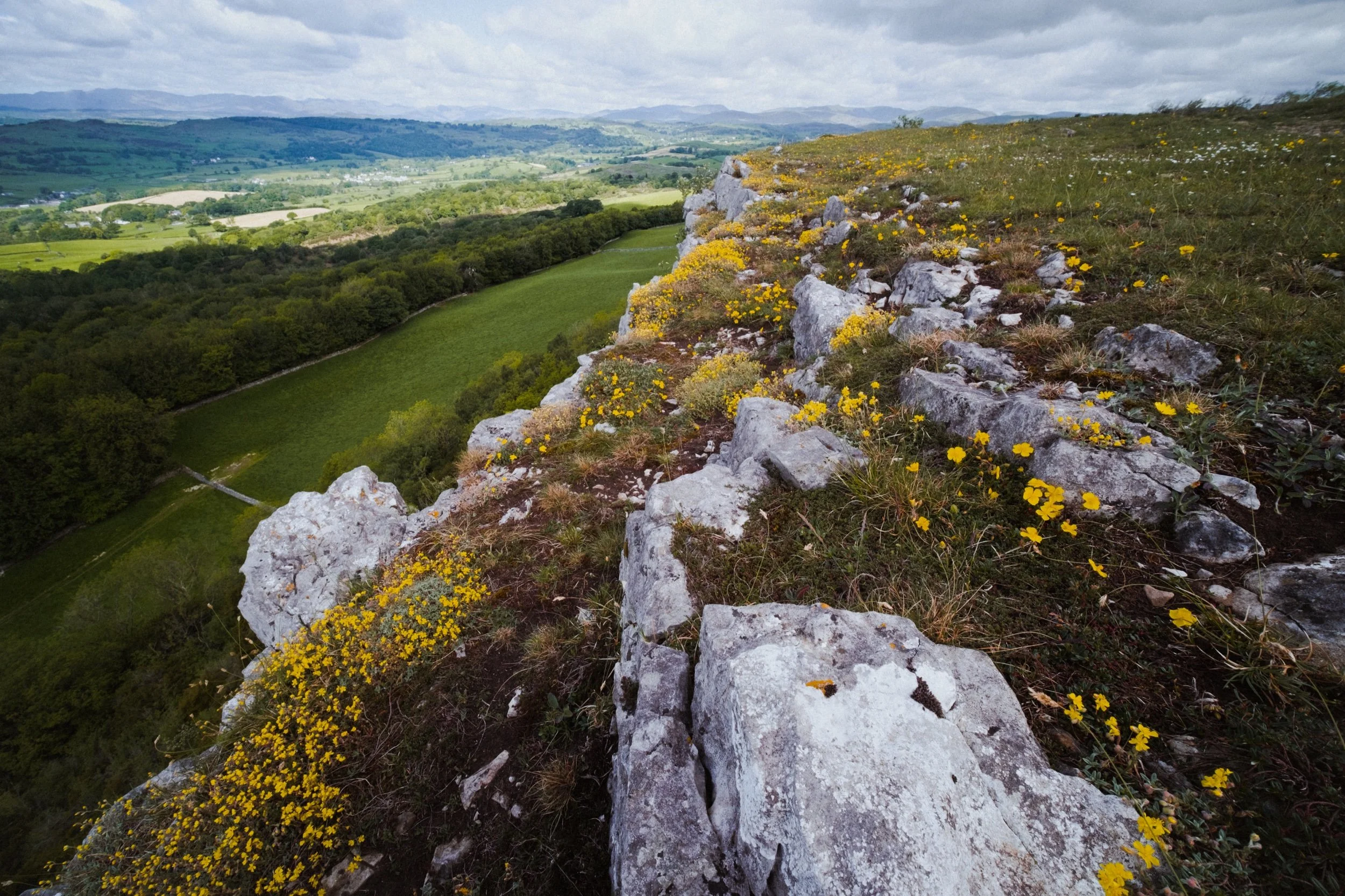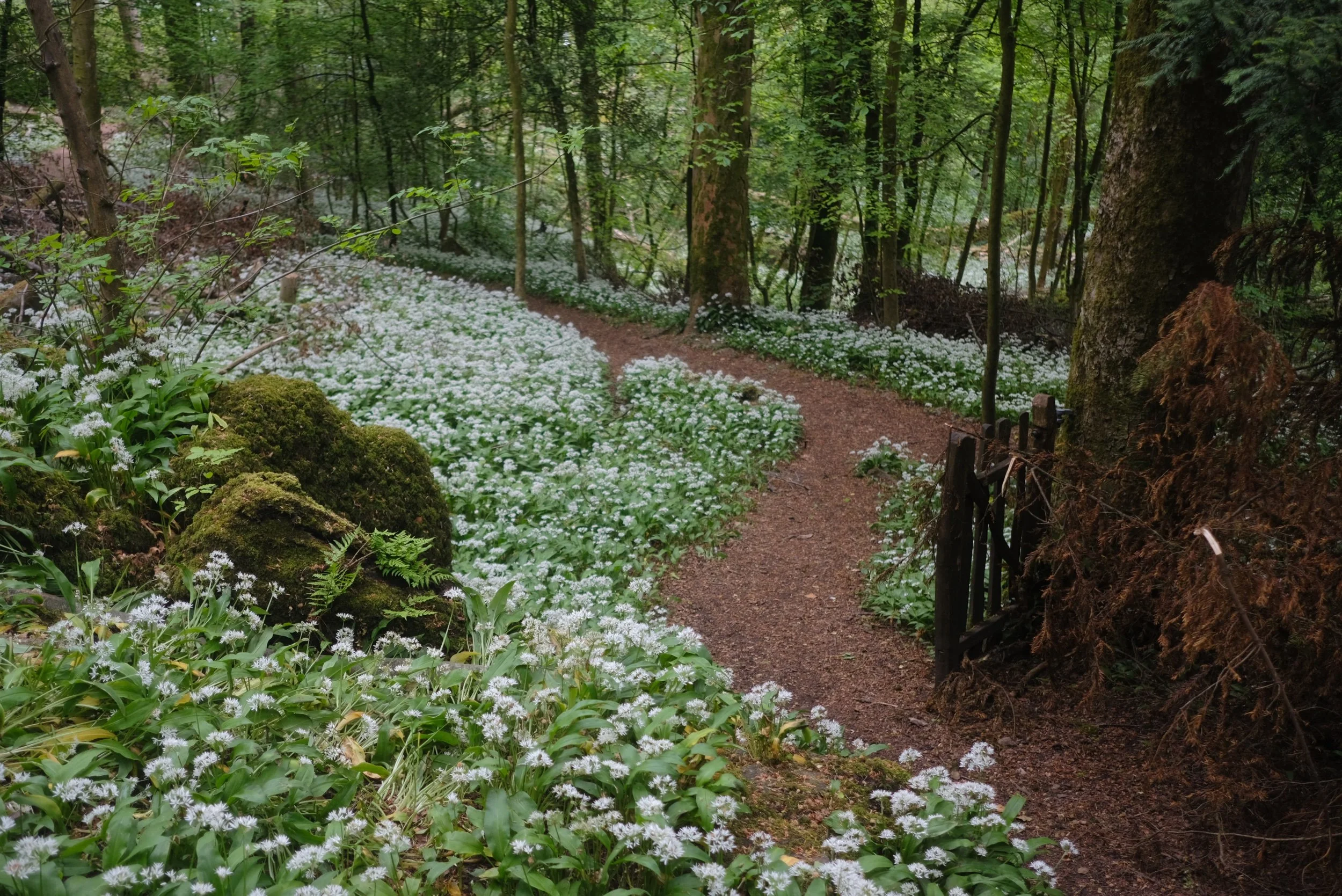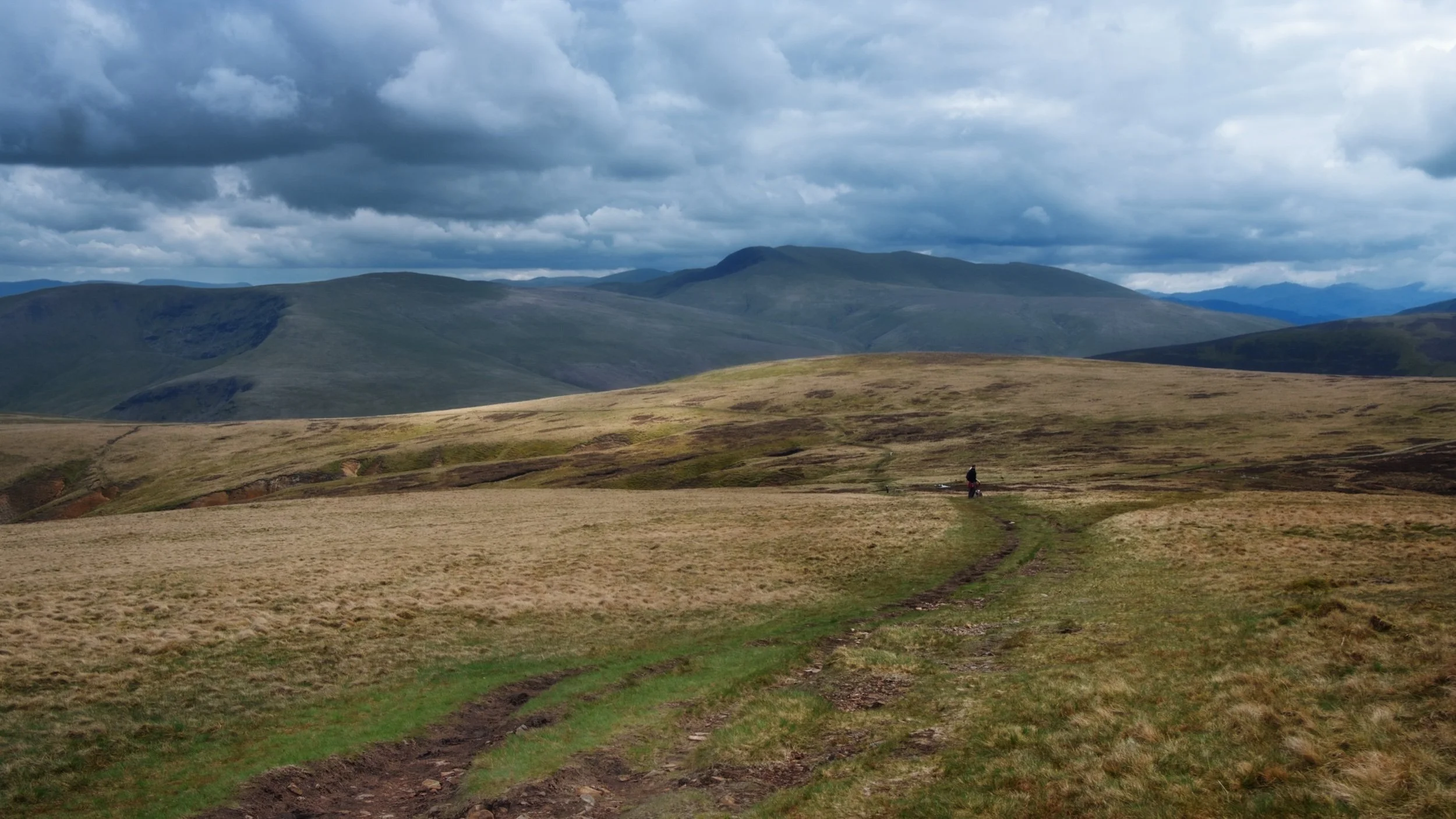Scout Scar, Lake District, Spring
2022 has been fuckin’ wild so far.
2022 has been fuckin’ wild so far.
But finally, things are a bit happier. Family members that had been in hospital for separate issues are now home and recuperating.
It’s been stressful, and there have been somber conversations.
Let’s hope the 2nd half of 2022 improves.
We’ve got my Better Half’s sister staying with us for a while. She, too, is a photographer, and considerably more established and talented than me. Today, the sun rose and a glorious spring/summer’s day was upon us. We all, keenly, felt the need to be out in nature. What better way than to explore our own back garden as it were? Up to Scout Scar we go!
All photos taken on my Fujifilm X-T2 using my three prime lenses and a new lens (more on that further in the post): a Fujinon 23mm f/2.0, a Laowa 9mm f/2.8, and an adapted Pentax SMC 55mm f/2.0. Developed in Lightroom, finished in Affinity Photo.
Heading up Helsington Laithes, a scene of serene summery simplicity.
How about this for r/RuralPorn?
Finally, up the back of Scout Scar and over its spine to enjoy the extensive views across the Lyth Valley towards the Lake District fells.
A lone tree growing out of the limestone acts as a nice “signpost”, pointing at the Lake District fells.
I never get tired of the sheer drop from the cliffs of Scout Scar.
Looking back south. The atmosphere was so clear that we could easily make out the Kent Estuary, which leads out to Morecambe Bay, with Arnside Knott above it.
The Kentmere and Longsleddale fells using the limestone cliffs as a leading towards them.
I think this is one of the bigger vertical drops along Scout Scar, highlighted by the tiny people waltzing along the top.
I think these might Helianthemum nummularium, or Common rock-rose. They apparently prefer dry, base-rich soil, and as limestone—which is what Scout Scar is made of— contains a lot of Calcium Carbonate (CaCO3), an alkaline material, this would make sense.
I can tell I’ve not been up Scout Scar much during the late spring/summer, because I had no idea there were so many beautiful flowers along the cliff tops! My ultra-wide angle lens had a lot of fun.
A 3-shot vertorama featuring the nick and drop of Hodgson’s Leap with the Lyth Valley and the Lakeland fells beyond.
It’s so good for the brain to see everything looking so green again.
Beyond the nick of Hodgson’s Leap, Lisabet and her sister were motoring on ahead, heading towards the Mushroom. In the distance, the Kentmere fells, clear as a bell.
View after view after view. It’s hard to pick just one.
The Lake District fells, with the Langdale Pikes in the centre, shot from the summit of Scout Scar, which is crowned by the Mushroom shelter.
Back down the back of Scout Scar, with the Howgills looking lovely.
After we made it back to town and refuelled with coffee and lunch, we browsed some of the charity shops. In the window of Oxfam, I spotted a Vivitar “Series 1” 28–105mm f/2.8–f/3.8 zoom “macro” lens, made for the Pentax K/Ricoh mount. I already have a Pentax SMC 55mm f/2.0 with the relevant adapter to mount on my Fujifilm X-T2, so this zoom lens would work too. It included the box case, plus manual and beautifully made leather pouch case. And all for £30! So I nabbed it! And the above is a shot using my new lens, zoomed in all the way to 105mm. Bargain!
Did you like these photos?
Brigsteer Park, Lake District, Spring
I wanted to see a lot of bluebells one last time for this year.
I wanted to see a lot of bluebells one last time for this year.
A work colleague tipped me off about Brigsteer Park, a woodland south of its village namesake, Brigsteer. The village sits underneath Scout Scar, and there’s a surprising amount of woodland underneath this fell.
So, Lisabet and I parked up at Helsington St. John’s Church and plotted a route down the fell slope, through a Bee Reserve and into Brigsteer Park for a ruddy good exploration.
All photos taken on my Fujifilm X-T2 using two of my prime lenses: a Fujinon 23mm f/2.0 and an adapted Pentax SMC 55mm f/2.0. Images developed using RNI Films’ Kodachrome film profiles.
The views from the car park Helsington St. John’s church are sublime. All the way across the Lyth Valley to the Lake District fells.
The southern shoulder of Scout Scar and the small road that allows access to Helsington St. John’s Church.
As we navigate the footpaths down the fell slope, Whitbarrow commands your attention directly across the Lyth Valley.
Couldn’t resist a shot of this gorgeous old house, covered in ivy.
A delightful little cottage on Park End Lane just before you enter Brigsteer Park.
Whoever lives at the cottage is a keen gardener. We had to look up what these weird and wonderful plants were. Turns out they’re probably Chilean Rhubarb, Gunnera tinctoria. Also, not actually related rhubarb though you can apparently consume Chilean Rhubarb as you would normal rhubarb.
Looking back at this impossibly idyllic scene before we head into the woods.
It turns out that Brigsteer Park is a proper woodland, thick with growth and full of old trees.
An old tree with its own “cane”.
Look at this old yew tree with its “ligaments” and textures. Isn’t it magnificent?
Another old yew, found further into the woodland.
As we neared the exit, I turned back to snap this scene. Unfortunately, I didn’t see any sign of carpets of woodland here at Brigsteer Park. Perhaps we were in the wrong bit?
Whitbarrow Scar once again commanding our attention from across the Lyth Valley.
After carefully navigating through some young cows and bullocks, we returned to Park End Lane. The gardener’s cottage here, cosily nestled in the woods of Brigsteer.
Everywhere is exploding in colour and wildflowers.
Brigsteer Causeway, which cross the wetter and more swamp-like part of the Lyth Valley.
Brigsteer is such a bonny village.
I mean, come on.
Not a bad place to do the rounds.
As we started climbing the road up back towards St. John’s Church, the views opened to us again. Here you can see right across the Lyth Valley and even the Kent Estuary towards Arnside Knott.
Not a bad way to spend the morning.
Did you like these photos?
Then support me.
Serpentine Woods, Cumbria, Spring
There’s a lot going on right now.
There's a lot going on right now.
So, with another glorious spring day on the horizon, Lisabet and I booted up for a hike up the fellside of Kendal into Serpentine Woods.
In my opinion, Serpentine Woods looks its best at this time of year compared to any other. That's because the woods are filled with wild garlic, Allium ursinum. Around the middle of May the wild garlic produces a carpet of beautifully delicate white flowers and fills the air with the delicious scent of garlic.
Beyond the woods, Kendal looked spectacular in its greenery. Nature's restorative powers are not to be dismissed.
All photos shot on my Fujifilm X-T2 using my three prime lenses: a Fujinon 23mm f/2.0, a Laowa 9mm f/2.8, and an adapted Pentax SMC 55mm f/2.0. Images made 90% in-camera, with finalising in Affinity Photo.
A good route to Serpentine Woods involves walking up Kendal's steepest road, Beast Banks. Halfway up the road, a side street branches off. This is Garth Head, a medieval lane linking Beast Banks with Captain French Lane.
Everything's looking wonderfully green now.
Chinese Wisteria, Wisteria sinensis, and the old iron-wrought gate at Beech House, creating a lovely scene I had to capture.
So much green! Our route lies up and to the left.
This beautiful cottage sits right underneath Serpentine Woods. In the summer the front of the cottage explodes in flowers, and during the Christmas period it's often covered in a dazzling array of Christmas lights.
Into Serpentine Woods we go.
The woods sits on a shelf of limestone, which occasionally protrudes and creates little clearings in the woodland.
A family enjoy a wander through the woodland and its bounty of wild garlic flowers.
My favourite little area in Serpentine Woods, the "pointless" gate.
On goes my ultra-wide 9mm lens for some compositions involving some of the Storm Arwen casualties.
Getting this close to the wild garlic, the smell was intoxicating.
Out of the top of Serpentine Woods, the views over Kendal and its valley are stunning. It was nice to see plenty of families out, enjoying nature.
This bench signals our way back down the fellside.
This year's spring lambs are getting nice and fat now.
Fantastic cloud formations were building above Benson Knott, which sits above the town.
Across the Kendal valley towards the Whinfell Common and the Howgills.
To the north, the Kentmere fells look tantalisingly beautiful.
The path follows this dry stone wall all the way back down into town.
One last look back north.
Just one of many allotments in Kendal. This one seems to be home to a flock of homing pigeons.
Closer to Windermere Road and the clouds are building up.
I do love me some cloud porn.
High Pike, Lake District, Spring
There’s more to the Northern Fells of the Lake District than meets the eye.
There's more to the Northern Fells of the Lake District than meets the eye.
Nearing the end of our May break, and after having enjoyed the delights of Dash Falls, Lisabet and I decided that a reasonably high climb was in order.
Thankfully we had assistance! A former work colleague of mine turned good friend, Kate, lives in Northern Cumbria and is fell acquainted with the Northern Fells. After a coffee and a catch up, she guided us to a good parking area and we set off up the fell.
The Northern Fells really put me in mind of the Howgills: rolling, smooth hills with deep scarred valleys. Our goal for the day was to summit High Pike (658 m/2,159 ft), and in places the going was pretty steep. However, the views from the top are exquisite.
All photos shot on my Fujifilm X-T2 using two of my prime lenses: a Fujinon 23mm f/2.0 and an adapted Pentax SMC 55mm f/2.0. Images converted in Lightroom, then edited in Affinity Photo.
On our way up the easy-to-follow path and already the views are wide open and expansive. A great day for hiking.
The way up, with Potts Gill to our right. This area of the Northern Fells has been historically mined extensively, evidenced by fenced off shaft entrances and clear tracks.
The view from near the top of Potts Gill and its ripples. Dead centre is a transmitting station and in the far distance are the coastal Galloway mountains across the Solway Firth.
As the continue the climb, slivers of light dance across the fells and sink into the gills. The prominent peak is Brae Fell.
A 55mm composition of Brae Fell with deep gills scarring its flank.
But finally, after lots of huffing and puffing, summit! Looking south from the summit of High Pike, the fells criss-cross each other towards the back of Blencathra.
Even more stunning views to the east. To the left is Carrock Fell, and to the right are the crags of Bowscale Fell.
I ventured down the western slope of High Pike a little bit to get a clear view of the scene here. Great Lingy Hill and its extremely steep valley.
I kept returning to gawp at the view southwards, checking out the sheer southeastern crag faces of Bowscale Fell and Blencathra.
Heading back down the same route, the afternoon sun breaks through and scans across the scene ahead of us.
Back down on Caldbeck Moor there is gorse everywhere, smelling beautifully of coconut.
One last look back at the trail we took to High Pike. What a crackin' hike and a beautiful conclusion to our week.
Dash Falls, Lake District, Spring
Here’s another place I’ve been meaning to explore for ages.
Here's another place I've been meaning to explore for ages.
The Northern Fells of the Lake District are dominated by two champions: Skiddaw and Blencathra, the 6th and 18th highest mountains in England respectively. These fells make up a wall of peaks at the southern end of the Northern Fells, looming directly over Keswick and Threlkeld.
There are, however, numerous fells and valleys behind Skiddaw and Blencathra, and by comparison these fells see little footfall. On the western side of the Northern Fells, nestled in between the Uldale fells and the Back o' Skidda is the Dash Valley. At the head of this valley drops a rather spectacular waterfall, Dash Falls, also sometimes called Whitewater Dash waterfall. Rather than being one single drop, these falls take the form of a series of steep cascades from the head of Dash valley to the valley floor.
Though the day was relatively overcast, the scenes were no less epic. Happily, there were also plenty of Herdwicks about!
All photos taken on my Fujifilm X-T2 using my three prime lenses: a Fujinon 23mm f/2.0, a Laowa 9mm f/2.8, and an adapted Pentax SMC 55mm f/2.0. Images developed using RNI Films' Kodachrome film profile.
The first part of the walk involves navigating through livestock pasture to reach Peter Houses Farm and joining the Cumbria Way. Already, scenes were looking incredible.
Herdwicks! With their lambs, perhaps only a couple of weeks old.
A true Lake District scene: Herdwicks and the fells.
Our first sight of Dash Falls. From this point on the Cumbria Way is properly paved and easy to follow all the way to the falls.
Looking back at the way we came. On the right is Binsey, an isolated little hill that nevertheless enjoys fantastic views.
A marker stone indicates the bridleway ahead towards Dash Falls. Beyond the falls you can carry on over via the Cumbria Way towards Skiddaw House, a hostel in the middle of Skiddaw Forest.
The path gets steeper and the falls get closer.
Near the top of the path you can enjoy the view straight down the falls. It might be possible to clamber down and get right alongside them, but I wouldn't dare.
With my ultra-wide lens on, I was able to capture this expansive scene of the Dash valley from the top of Dash Falls.
On the way back down, after a spot of lunch and rest, I kept the 9mm lens on to snap some expansive views of the valley from the top.
Looking straight down Dash Valley. There's loads of heather about, so this will be a great place to return to in late summer.
A 6-shot vertorama with my 55mm lens of Dead Crags, which looms above the southern side of Dash Valley.
One last look back, a zoomed in composition of Dash Falls as it cascades down the sheer face of Dash Valley's head.
A quizzical cow scopes us out as we near the start of our walk at Bassenthwaite village.
Allonby Bay, Cumbria, Spring
We’re taking a week’s break in Western Cumbria.
We're taking a week's break in Western Cumbria.
After arriving at the accommodation near Wigton, meeting the owners, and settling in, we decided an evening stroll at nearby Allonby Bay was in order.
Allonby's a small coastal village on the western coast of Cumbria, roughly halfway between Maryport and Silloth. It's an unassuming place, once home to a small fishing fleet. Nowadays, knowing tourists can come off the main roads to find this little treasure near the Solway coast and its amazing views across the Solway Firth towards the Galloway mountains in Scotland.
Photos shot on my Fujifilm X-T2 using my three prime lenses: a Fujinon 23mm f/2.0, a Laowa 9mm f/2.8, and an adapted Pentax SMC 55mm f/2.0. Images developed using RNI Films' Agfa RSX II 200 film profile.
Across the sea, as the sun was setting, Criffel hill is clearly seen as it looms over the Scottish coast.
A winding channel snakes out from Allonby towards the bay.
Crepuscular rays emerge from the heavens and cast golden light on the sea.
One of my favourite compositions of the evening.
Looking south down Allonby Bay, the golden clouds serving as a wonderful leading line.
Little pools in the rippling sand made for beautiful reflections of light and colour.
Finally, the setting sun came out from behind the clouds strong enough to pull out the textures in the rippling sand.
As the sun started to disappear behind the clouds, we navigated away from the sands and back to the village. The coastline near the village is bordered by these reeds, which I needed to make a composition of.
The reeds were also home to some beautiful flowers that we didn't expect to see.
A gorgeous start to our break.








